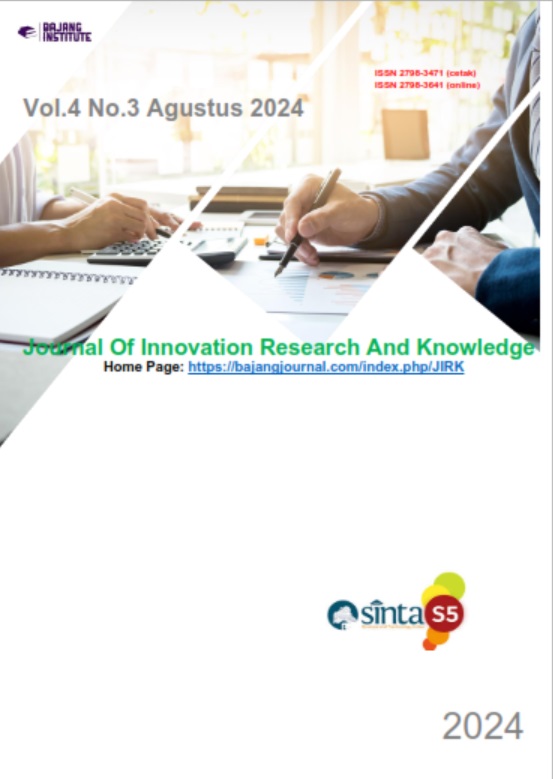EVALUASI PENERAPAN PROJECT BASED LEARNING (PBL) DI PERGURUAN TINGGI VOKASI PADA PROJECT TRANSKRIPSI DAN SUBTITLE VIDEO PEMBELAJARAN TERKAIT KESELAMATAN KERJA DI PERUSAHAAN JEPANG
DOI:
https://doi.org/10.53625/jirk.v4i3.8451Keywords:
Project-Based Learning, Safety Videos In Press Machinin, Translation Skills, Takumi PolytechnicAbstract
This study aims to understand the implementation and evaluate the effectiveness of the Project-Based Learning (PBL) model in the project of translating safety videos in the field of press machining at a Japanese company. With the increasing number of foreign workers in Japan, the need for accurate and easily understandable translations is crucial to ensure a good understanding of safety procedures in the press machining field. The PBL model, which engages learners through direct involvement in real projects, is expected to enhance translation skills, content comprehension, as well as collaboration and problem-solving abilities. This research employs a mixed-method approach, utilizing both qualitative and quantitative methods. Data were collected through pre-tests and post-tests to measure the students' translation skills before and after the project, observations, and field notes to identify constraints and challenges faced, as well as in-depth interviews with students and instructors to gain their perspectives on the effectiveness of the PBL model. Additionally, video analysis of the translated work was conducted to assess the quality and accuracy of the translations. The results indicate that the PBL model is effective in improving translation skills in the field of press machining. Students involved in this project showed significant improvement in both their translation abilities and their understanding of press machining. Despite some constraints and challenges, such as limited time and resources, students felt that the PBL model provided a more engaging and meaningful learning experience. This study concludes that the PBL model is an effective approach for use in translating safety videos in the field of press machining at Japanese companies. Recommendations include curriculum enhancements, instructor training, and the provision of adequate resources to support the successful implementation of the PBL model in the future
References
Bell, S. (2010). Project-Based Learning for the 21st Century: Skills for the Future. The Clearing House: A Journal of Educational Strategies, Issues and Ideas, 83(2), 39-43. https://doi.org/10.1080/00098650903505415
Blumenfeld, P. C., Soloway, E., Marx, R. W., Krajcik, J. S., Guzdial, M., & Palincsar, A. (1991). Motivating Project-Based Learning: Sustaining the Doing, Supporting the Learning. Educational Psychologist, 26(3-4), 369-398. https://doi.org/10.1080/00461520.1991.9653139
Grant, M. M. (2002). Getting a Grip on Project-Based Learning: Theory, Cases, and Recommendations. Meridian: A Middle School Computer Technologies Journal, 5(1). Retrieved from http://www.ncsu.edu/meridian/win2002/514/project-based.pdf
Krajcik, J. S., & Blumenfeld, P. C. (2006). Project-Based Learning. In R. K. Sawyer (Ed.), The Cambridge Handbook of the Learning Sciences (pp. 317-334). Cambridge University Press.
Larmer, J., & Mergendoller, J. R. (2010). Seven Essentials for Project-Based Learning. Educational Leadership, 68(1), 34-37. Retrieved from http://www.ascd.org/publications
Thomas, J. W. (2000). A Review of Research on Project-Based Learning. Autodesk Foundation.













